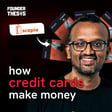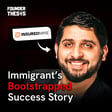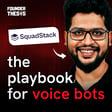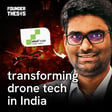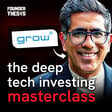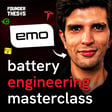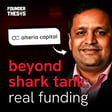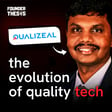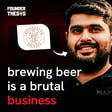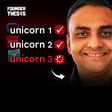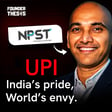
Building India's Biggest D2C Furniture Brand | Ankit Garg (Wakefit)
"Failure hurts, but it is the bitter medicine of failure that leads to a healthy and sustainable business."
Ankit Garg's journey exemplifies this. His first venture failed miserably, teaching him invaluable lessons that paved the way for building Wakefit into a home solutions powerhouse. Embracing failure isn't just about bouncing back; it's about learning and building resilience.
Ankit Garg is the Founder of Wakefit, one of India's largest and fastest-growing home and furniture D2C brands. An IIT Roorkee graduate, Ankit led Wakefit through remarkable growth, achieving 3x revenue increases for four consecutive years while maintaining profitability. Wakefit is on track to cross ₹1000 crore in revenue, manufactures nearly 99% of its products in-house, employs over 4500 people, and was recently valued at ₹1800 crores.
Key Insights from the Conversation:
- Embracing Failure: Ankit's first startup failure provided crucial learnings about B2B credit cycles, managing manufacturing challenges, and the importance of resilience.
- Customer Obsession: Building deep customer connections, actively seeking feedback (even through post-purchase calls), and letting customer needs guide product development are core to Wakefit's strategy.
- Operational Efficiency: A relentless focus on efficiency through backward integration, lean manufacturing inspired by Toyota, in-house logistics, and technology drives cost savings that are passed to customers.
- Building D2C: Ankit disrupted the traditional offline mattress market by leveraging online channels like Amazon initially and then building Wakefit's own successful D2C platform.
- Strategic Growth: Expanding methodically from mattresses to sleep solutions and now full home solutions, driven by customer feedback and a vision to be the "most loved home solutions company".
Chapters:
- 00:45 Introduction: The Value of Failure
- 01:55 Ankit's First Venture: Foam Innovation & Harsh Lessons
- 15:15 The Emotional Toll & Aftermath of Failure
- 17:27 Rebuilding: From Pasta Sales to Learning E-commerce at Akosha
- 18:58 Spotting the Mattress Opportunity & Launching Wakefit Lean
- 29:09 Early Wakefit Growth: Customer Connection & First Principles
- 40:46 Scaling Wakefit: Explosive Revenue Growth & Profitability
- 43:33 Product Expansion: From Mattresses to Full Home Solutions
- 56:29 Building the Engine: Lean Manufacturing & Packaging Innovation
- 1:01:55 Operational Excellence: In-House Logistics & Carpenter Gurukul
- 1:11:45 Customer Obsession & Unique Feedback Loops
- 1:22:15 Funding the Dream & Vision Beyond Valuation
Hashtags:
#FounderThesis #AnkitGarg #Wakefit #StartupIndia #Entrepreneurship #D2C #DirectToConsumer #Ecommerce #IndianStartups #Failure #Resilience #CustomerObsession #HomeFurniture #Mattress #MakeInIndia #SupplyChain #Logistics #Manufacturing #BusinessGrowth #Scaling #Bootstrapping #VentureCapital #IIT #BusinessPodcast #StartupStory
